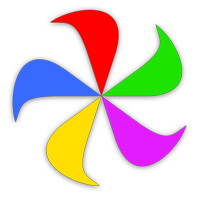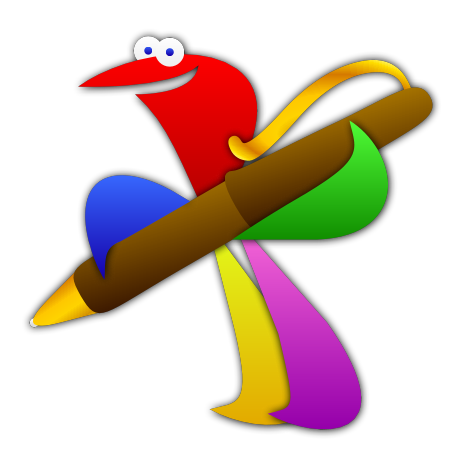Crossgrade an App Store license to a direct license
Last updated: Feburary 14, 2017
A crossgrade is a conversion of an App Store license to a direct license for one of our apps. With a crossgrade license, you can run the direct version of an app as a licensed user, even if you bought from the Mac App Store. We offer two types of crossgrades…
Temporary
Crossgrade licenses are available for any app we sell both directly and in the Mac App Store—currently, that’s everything except Butler and Resolutionator. The crossgrade license you’ll acquire can only be used after installing and running the App Store version of the app. In addition, temporary crossgrade licenses can’t be used to purchase an upgrade license to the direct version of the app. If you get a new Mac, or reinstall macOS, you’ll have to repeat this conversion process.
Permanent
These crossgrades are for apps that no longer have feature parity between the non-sandboxed Mac App Store and direct versions, or that are no longer available in the Mac App Store. For example, we had to remove Spaces support from Witch, so App Store Witch buyers can crossgrade to a permanent direct license for Witch. Permanent crossgrades are real direct licenses; they’re eligible for upgrade pricing, and once installed, there’s no need for the App Store version ever again.
Currently eligible: Desktop Curtain • Usher • Witch
How to crossgrade varies based on whether you’re doing a permanent or a temporary crossgrade; please read the relevant section below for the instructions. There are step-by-step written instructions and a video walkthrough for each method.
Temporary crossgrades
If you prefer video instructions, watch this walkthrough to learn how to get a temporary crossgrade for one of the eligible apps. The video uses Keymo, but the process is the same for any of the apps.
Note: You can watch a much larger version if you prefer.
If you prefer the written word form of instruction, here are the steps to follow:
- Install the App Store version of the app for which you’d like the license. (More than likely, you’ve done this already.)
- If you haven’t done so, make sure you run the App Store version at least once. This creates an entry on your Mac that we look for to confirm a valid App Store purchase. (Nothing is sent to our servers; we just check for the file’s existence and confirm some values.)
- Download the direct version of the app from our web site.
- Install the direct version of the app, but don’t put it in your Applications folder. Choose the Desktop or Documents or whatever—just leave it outside Applications, so you don’t overwrite the App Store version of the app just yet.
- Launch the direct version of the app, then select the License entry in the app’s app name menu (i.e. the Name Mangler menu in Name Mangler). You should see our temporary use license, which looks like this:

As long as you see “Anon McAppStore,” you’re set. If you don’t see that text, you’ve missed one of the steps in the process.
- You can now zip the App Store version of the app (so you still have it if needed), and move the downloaded version into the Applications folder.
Because this is a temporary license, if you ever get a new Mac, or reinstall macOS, you’ll have to repeat these steps to again use the direct version of the app as a licensed user.
Permanent crossgrades
First up are the video instructions, using Usher. The process is the same for other apps that are eligible for permanent crossgrades.
Note: You can watch a much larger version if you prefer.
If you prefer the written word form of instruction, here are the steps to follow:
- Install the App Store version of the app for which you’d like the license. (More than likely, you’ve done this already.)
- If you haven’t done so, make sure you run the App Store version at least once. This creates an entry on your Mac that we look for to confirm a valid App Store purchase. (Nothing is sent to our servers; we just check for the file’s existence and confirm some values.)
- Download the direct version of the app from our web site.
- Install the direct version of the app, but don’t put it in your Applications folder. Choose the Desktop or Documents or whatever—just leave it outside Applications, so you don’t overwrite the App Store version of the app just yet.
Note: Witch 4 is an exception to this, as it’s not an application, it’s a System Preferences panel. Just go ahead and install it, as it won’t overwrite the App Store copy of Witch, which is a traditional app.
- Launch the direct version of the app, then select the License entry in the app’s app name menu (i.e. the Name Mangler menu in Name Mangler). You should see our temporary use license, which looks like this:

If you see that, proceed to the next step. If you don’t see that text, you’ve missed one of the steps in the process.
Note: Witch users, click on the About tab to see the license; there is no menu structure in Witch.
- Right-click on the license and select “Request permanent crossgrade” from the pop-up menu.
- A name/email form will appear; complete it with your information, then wait for the “Crossgrade Request Sent” dialog to appear; click OK when it does.
- You will receive an email with a link to download your license file. Download it, and save it to the Desktop in an unzipped state. Note: The download link expires in a few days, so don’t wait to download. And after you download it, back it up.
- With the license file on the Desktop, double-click it. The app you licensed should launch (if it wasn’t open) and show your name in the license file.
You’re now a fully-licensed user of the direct version of the app, and you can delete the App Store version from the Applications folder. Next, move the direct version of the app into the Applications folder—except for Witch, which is a System Preferences panel—and you’re done.
If you have any questions on the process, please don’t hesitate to open a support ticket and we’ll get it figured out.
 Many Tricks
Many Tricks
